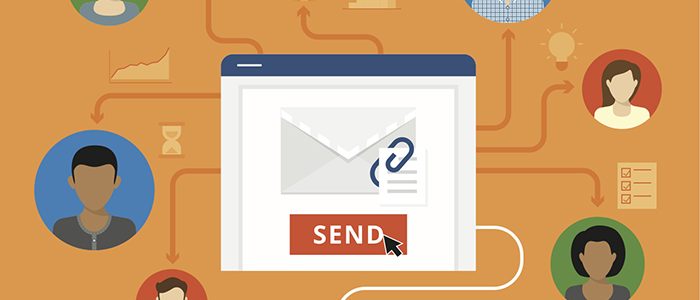We all do it. Send email, that is. Effective leaders just do it a little differently. A quick review of how they use email teaches us a couple interesting things about leadership.
First, leadership affects every form of communication, even the seemingly mundane. Second – and this is the good news – not only can we learn from their methods, but thanks to email’s immediate nature, you can start incorporating leadership behavior into your daily routine right away.
So before you click “Reply All” on another email, here are five ways you can start practicing your leadership skills in today’s most ubiquitous form of communication.
- Get your head out of the inbox. Most of us keep our email open throughout the workday, responding to emails as they arrive. Leaders take a very different approach, closing out of their email programs for hours at a time. The immediacy of email makes it tempting to respond instantly and continuously, but this simply isn’t necessary. Try taking back control of your time. Prioritize what’s important over what technology deems urgent. Use your most productive hours for tasks that require your deepest thought and most nuanced attention. The world won’t end if you check email twice a day – perhaps once in the morning and once in the afternoon.
- Remember, you’re invisible. Scholars estimate that as much as 60% of communication is non-verbal. Body language plays a huge role in how we’re understood – or misunderstood. That helpful context doesn’t exist with email, as recipients can’t see you or hear your intonation. To avoid misunderstanding, it helps to keep emails as simple as possible. Make a conscious effort to stay on point. Use simple words. Keep your sentences short, and keep the overall length of emails as brief as possible. Like many things, simply being aware that misunderstanding is possible is a great first step.
- Get some face time. It’s important to remember that there are other forms of communication at your disposal. When do you move a conversation beyond the digital? Leaders suggest becoming adept at recognizing the markers. Topics that are highly complex, or emotionally charged, that involve different perspectives or decision-making all warrant face-to-face discussions. Getting your colleagues together in a room – or even on the phone – will be much more effective than a long email chain.
- It’s okay to hit the “Pause” button. Many of us are in the habit of sending instant responses to messages. Email makes it possible, but it’s not always wise. Leaders remind us that in many cases, taking a full 24 hours to respond to email is perfectly acceptable. (Depending on your organization’s culture, of course.) They also tend to craft important responses in Microsoft Word documents first. This allows them to step away from the emotion of the moment, and give their responses the care and thought they deserve.
- Empower your team. Leaders often set the tone for their team or even the whole organization simply by creating good email policy. Many companies are adopting a “No emails after 7pm and no emails on the weekend” policy. People are most effective when they have time to be creative and thoughtful. Email can sap your time and energy, and leaders who draw that line are empowering their teams be more effective. They’re also contributing to positive work-life balance.
Finally, think twice before hitting the “Reply All” button. Then think again. Not every message is for everyone in your organization.
When you think about it, these pointers go beyond email and tell us volumes about effective leadership itself: Stay on point. Prioritize your time. Empower those around you. Put into practice, these leadership skills can differentiate you from your colleagues and help advance your career.
These insights into effective leadership come to you courtesy of Gonzaga University’s Communication and Leadership Studies program (COML). We’re combining leadership, communication, and critical thinking skills to create the type of leaders tomorrow’s organizations will demand.
